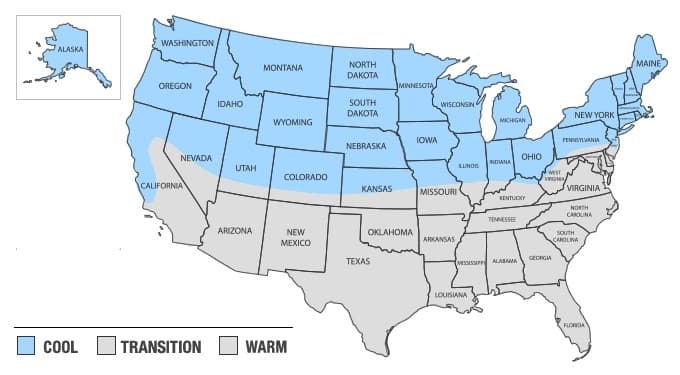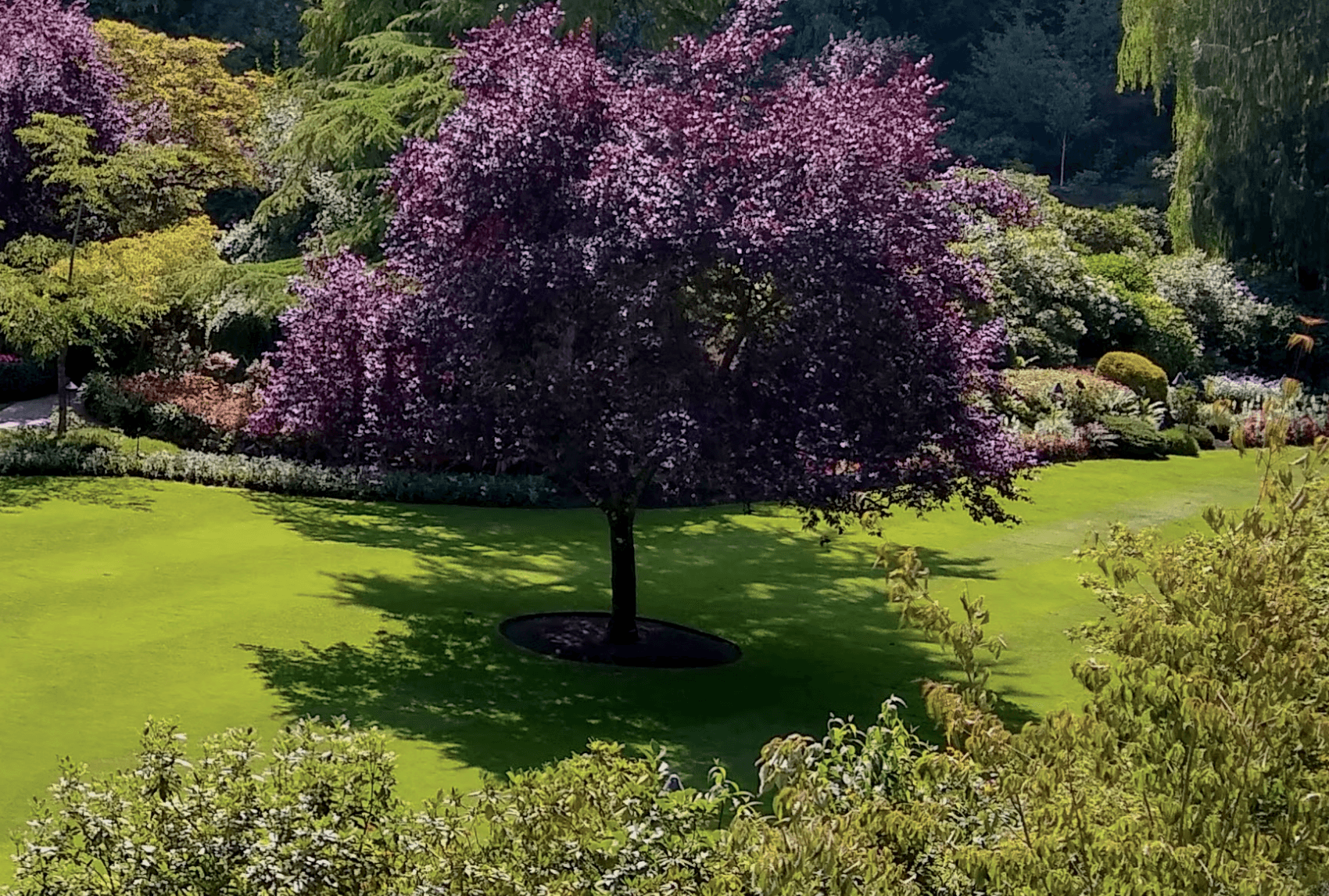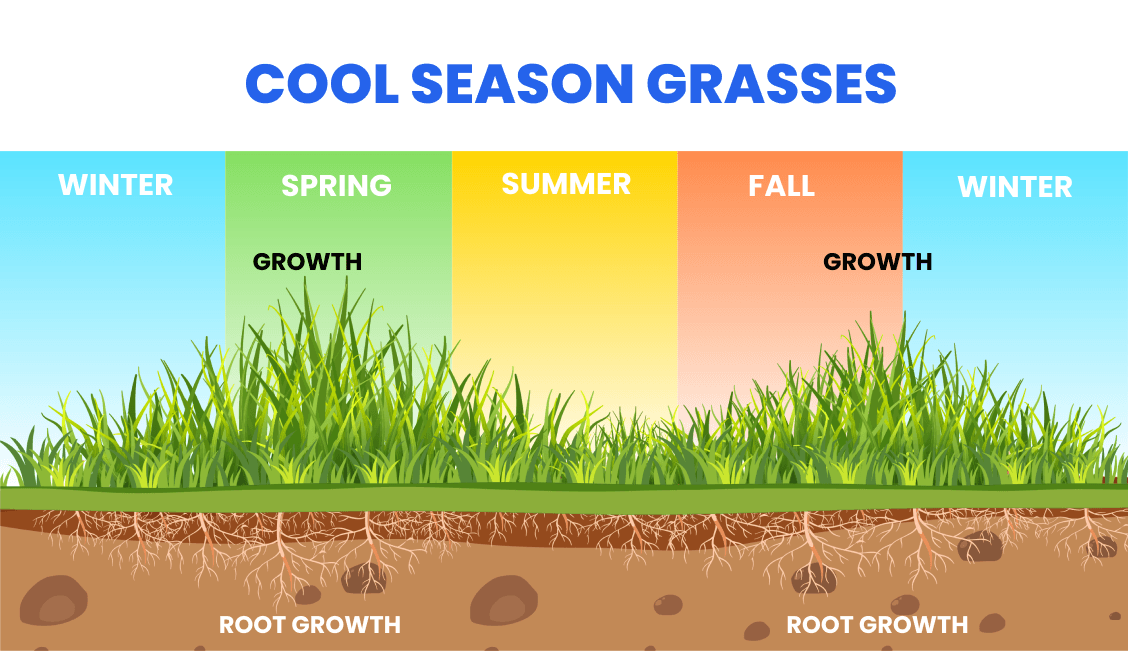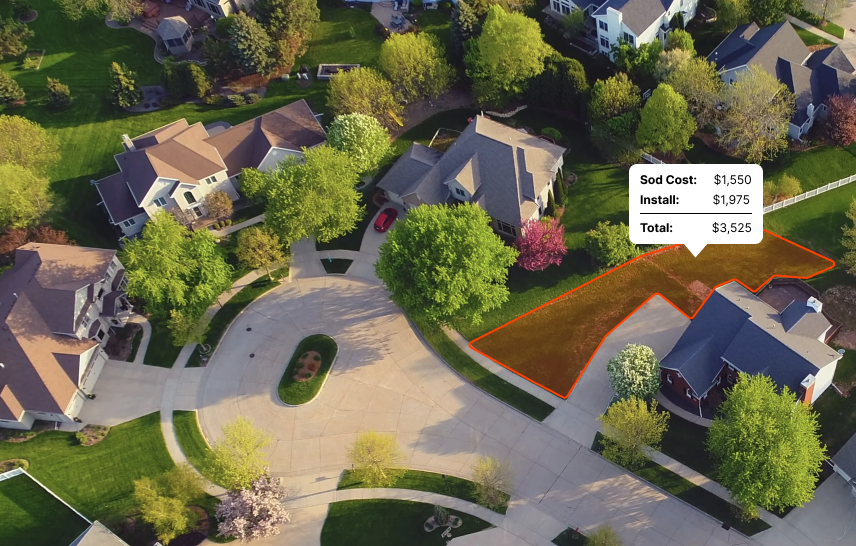Don't hesitate to chew the cud with a local lawn care whiz to pinpoint the perfect grass variety for your needs.”
Introduction
Connecticut's humid subtropical climate brings you a mix of steamy, hot summers and nippy winters, shaping the kinds of grass that flourish here. Grasses that laugh in the face of heat and drought, yet don't shy away from cold winters, are the champions in these parts.
If you're looking to lay grass in Connecticut, circle late summer to early fall on your calendar. The cooler temperatures and added moisture in the air during this period create a perfect grass-laying setting.
Plus, this timing helps the grass roots bed down and brace themselves for winter's arrival. Connecticut falls squarely in the cool-season grass zone, making grass varieties accustomed to lower temperatures your best bet.
These types love basking in 60-75°F weather, like your Kentucky bluegrass and the like. Remember, the winning grass for your lawn hinges on factors like the soil type, sunlight quota, and maintenance level.
What are the best sod types for CT?
In the world of landscaping, not all grasses are created equal. Each thrives in a specific climate zone: cool, warm, or transition.

Connecticut, with its cool season climate, prefers a particular set of grasses that relish the lower temperatures. The following sods are the easiest to grow and maintain in Connecticut:
While it's possible to grow grasses meant for other regions with proper care, attention and timing, these are the most common grasses in Connecticut for residential lawns.
Level Up Your Lawn Skills
Once per week we'll send you an interview from someone who has mastered the art of lawn care.
Recommended species for shade
Shade might seem a challenge, but don't sweat it! In Connecticut, we've got plenty of grass species that thrive even under the shade of our mighty Oak or Maple trees. Sure, they love sunlight, but they can get by on less. That's why we're covering the best grasses for shade here.
First up, our top pick: Fine Fescue. When you need a grass that's not a sun-worshipper, here's your go-to guy. It requires only four hours of sunlight. Plus, it's a champ in dry conditions. And did we mention it's comfortable underfoot? Perfect for those barefoot summer days.
Next, let's talk Kentucky Bluegrass. It might not be as shade-tolerant as Fine Fescue, but mix it with some Ryegrass and you've got yourself a dynamic duo. This blend can survive with around six hours of sunlight. It's like the Swiss Army knife of grasses. Versatile, reliable, and it always gets the job done.
Don't forget the St. Augustine grass. It grow well in both sun and shade. This baby needs five to six hours of sunlight per day. However, this grass isn't a big fan of the cold Connecticut winters. But, if you're willing to put in the work to protect it from frost, it's a great choice.
Last but definitely not least: Zoysia Grass. A bit of a wildcard, but hear us out. It's more sun-loving than the rest, needing six to eight hours of sunlight. But, it's also the most drought tolerant. So, if you have spots that are mostly shaded but get blasted during the peak sunlight hours, this one's for you.
Choosing the right shade-tolerant grass can be daunting. Just remember: it's all about picking the right grass for your particular conditions, and giving it a little love along the way.

Recommended for full sun or partial sun
Choosing the right sod for your lawn depends heavily on the sunlight exposure in your yard. Different grass types have varying light requirements for optimal growth and appearance. Assessing whether your lawn receives full or partial sun is essential in selecting sod that will flourish and stay healthy in your specific environment.
Below are some sod options recommended for either full sun or partial sun conditions in CT:
| Grass Type | Sun | Good to Know |
|---|---|---|
| Tall Fescue | Partial | Tall Fescue is adaptable to a range of conditions, including partial sun, and is known for its deep root system and tolerance to drought. |
| Kentucky Bluegrass | Full | Kentucky Bluegrass prefers full sun and is prized for its fine texture, rich color, and ability to recover quickly from damage. |
| Perennial Ryegrass | Full | Perennial Ryegrass thrives in full sun and is known for its rapid germination, fine texture, and bright green color. |
| Fine Fescue | Partial | Fine Fescue is well-suited for partial sun and is appreciated for its fine texture, shade tolerance, and low maintenance requirements. |
What varieties stay green year-round?
As with anything agriculture related, there is some nuance to this question. There are many grasses that can stay green year round in but it depends heavily on your location within Connecticut as well as any microclimates that may exist.
The following grasses have the ability to stay green year round in Connecticut:
| Grass Type | Caveats |
|---|---|
| Tall Fescue | It typically stays green throughout the year in milder climates, given that it isn't overly stressed by heat or drought in the summer. |
| Kentucky Bluegrass | It can retain its green color for much of the year when well-maintained, though harsh winter temperatures can push it towards dormancy and a browner hue. |
| Perennial Ryegrass | It can stay vibrant and green throughout the year in many climates, unless conditions are extremely cold or dry. |
| Fine Fescue | It keeps its green color throughout the year in ideal conditions. If the winters are particularly harsh, it may lose some color. |
What is the best time to lay sod in Connecticut?
Since it is considered a cool-season location, the ideal time to lay sod is in early spring or early fall. These periods offer moderate temperatures, leading to less stress on the sod and providing optimal conditions for root establishment before extreme temperatures of winter or summer. Avoid the summer, as high heat can stress the sod.
As you can see in the image below, you'll notice the most shoot growth (the grass above ground) and root growth in the spring and fall for cool season grases:

Find reputable companies for installing sod in CT
Here are the top problems you'll face when trying to get sod installed by a landscaping company:
- They're not transparent about pricing. You'll often get a quote that's way higher than you'd expect.
- They're hard to get ahold of on the phone or you'll reach out online but won't hear back.
- It's hard to pin them down for a specific date. Because you can only bring sod from the farm when there's decent weather, this causes some delays at times. It also has a short shelf life, so it's important to get it installed within a day or two of delivery.
We've done all the work for you. Click below to get a quote from one of the top installers in Connecticut.

